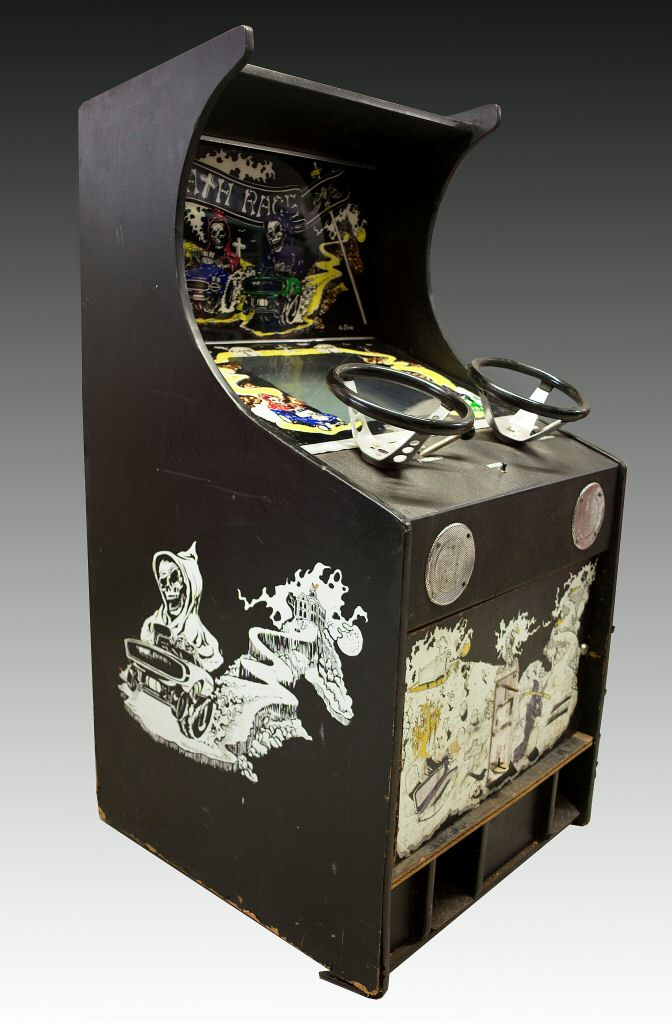
Rochester, New York, USA
Recently, ICHEG added the controversial arcade game Death Race to its collections.
Released by Exidy in 1976, Death Race became the first arcade game to spur a national controversy over violence in video games. A player of the game navigated a white car across the black screen as white stick figures, which developers called “gremlins,” ran back and forth. The driver attempted to run over the gremlins, which let out high-pitched screams and turned into tomb stones complete with crosses. With each kill, a player gained a certain number of points. Though the game featured minimal graphics, protestors soon claimed the title promoted excessive violence. Exidy responded that, despite the gremlins’ humanoid shape, they weren’t meant to represent people, but several flaws exist in this explanation.
Only a year before the game’s release, director Paul Bartel created the action movie Death Race 2000, starring David Carradine and Sylvester Stallone. The movie depicted a dystopian America that hosted the violent Transcontinental Road Race. During the race, motorists won prizes based on speed and how many innocent pedestrians they killed. The more violent the kill, the more points the drivers earned. While it remains unconfirmed whether or not designers based the game Death Race on the movie, people associated the two.
Additionally, Exidy’s working title of the game, Pedestrian, hints that developers originally envisioned the gremlins as humans. And Death Race was the first arcade game to present a human-shaped target. Previous games either featured alien enemies, such as the “flying saucers” in Computer Space by Nutting Associates, or possessed no fixed enemies at all, like Atari’s Pong. Lastly, protestors disapproved of the graphic artwork on the side panels of the arcade machine, which featured a skeletal Grim Reaper driving a racecar. This gave the game a sinister appearance.
Death Race’s attributes sparked the first video game-based mainstream media protest. Dr. Gerald Driessen, a behavioral scientist and manager of the National Safety Council’s research department, called the game “gross” and claimed it added to the nation’s “war and killing” mentality. David Row, safety consultant for the Automobile Club of California, called the game “sick, sick, sick,” because it taught the “morbid” skill of how to hit pedestrians. In 2007, CBS’s 60 Minutes held a discussion on the psychological dangers of video games. Due to these protests, Exidy only manufactured 1,000 Death Race units. Ironically, the controversy boosted the sales of arcade games in general, and Exidy products in particular. In his book The Ultimate History of Video Games, Steven Kent quotes Exidy president Pete Kauffman: “It seemed like the more controversy…the more our sales increased.”
The rarity of the console combined with its role in the narrative of video game violence makes Death Race a valuable piece of cultural history.



